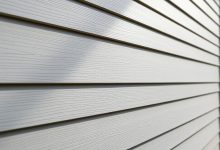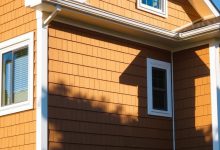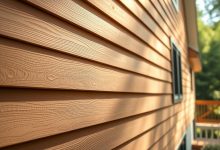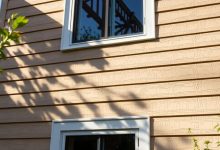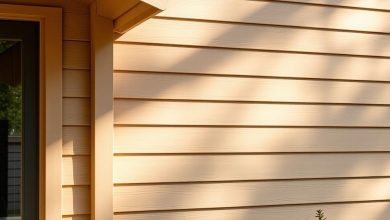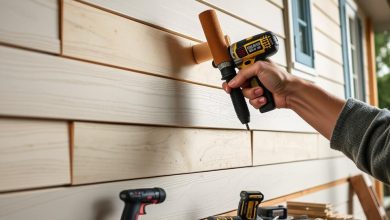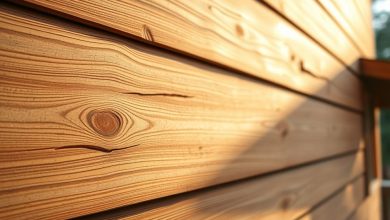How to Maintain Insulated Siding
Insulated siding is a smart choice for homeowners. It saves energy and lasts a long time. But, it needs regular care to work its best.
Keeping your insulated siding in good shape helps it last longer. It also keeps your home looking great and avoids expensive fixes. Using top-notch siding materials is just the start. You must also keep it up well to enjoy its full benefits.
By taking care of your insulated siding, your home stays energy-efficient and safe from the weather. This saves you money on energy and makes your home look better and worth more.
Key Takeaways
- Regular maintenance is essential for the longevity of insulated siding.
- Proper upkeep can prevent costly repairs and improve energy efficiency.
- High-quality siding materials are key for durability.
- Maintaining your siding can enhance your home’s appearance and value.
- Energy efficiency is a major plus of well-maintained insulated siding.
Understanding Insulated Siding and Its Benefits
Learning about insulated siding and its benefits is key to choosing the right exterior for your home. It’s not just about looks; it also makes your home more energy-efficient, durable, and valuable.
What Is Insulated Siding?
Insulated siding wraps your home in a layer of insulation. It’s made by placing insulation between the siding and the sheathing. This setup keeps your home warmer in winter and cooler in summer.
Energy Efficiency and Other Advantages
The main benefit of insulated siding is its boost to energy efficiency. It cuts down on heating and cooling costs. Plus, it offers:
- Improved durability
- Enhanced aesthetic appeal
- Increased home value
- Reduced noise pollution
These perks make insulated siding a great choice for those wanting to enhance their home’s look and performance.
Common Types of Insulated Siding Materials
Siding materials vary, and insulated siding is no different. Some common types include:
- Insulated vinyl siding
- Fiber cement siding with insulation
- Insulated wood siding
- Metal siding with insulation
Each material has its own pros and cons. Your choice will depend on your budget, climate, and personal taste.
Essential Tools and Materials for Siding Maintenance
Keeping your insulated siding in top shape requires the right tools and materials. The right equipment makes cleaning and repairs easier. It also helps your siding last longer.
Before starting, gather all the necessary supplies. This saves time and avoids extra trips to the store.
Cleaning Supplies and Equipment
For cleaning, you’ll need a soft-bristled brush or a soft cloth. These gently remove dirt without harming the siding. Use mild detergents made for siding. Avoid harsh chemicals or abrasive cleaners.
A garden hose with a spray nozzle is key for rinsing off dirt and detergent. For stubborn stains, a pressure washer can help. But use it carefully to avoid siding damage. A ladder or step stool is also handy for reaching high spots.
Repair Materials and Tools
For repairs, you might need caulk or sealants for gaps or cracks. Damaged or loose panels require replacement panels or reattachment tools like a utility knife. A ladder stabilizer is useful for safe access to high areas.
Having the right repair materials is important. This includes siding repair patches or replacement parts that match your siding.
Regular Cleaning Techniques for Insulated Siding
To keep your insulated siding looking great, clean it regularly. This keeps it looking good and working well. Cleaning stops dirt and mold buildup, keeping your home in top shape.
General Washing Guidelines
When washing your siding, use gentle methods to avoid harm. Mix mild detergent with warm water. Use a soft-bristled brush or non-abrasive scrubber to gently scrub, starting from the bottom up.
Key washing guidelines include:
- Avoid harsh chemicals or abrasive cleaners that can damage the siding material.
- Never use a wire brush or any scrubber that could scratch the siding.
- Rinse the siding thoroughly with clean water to remove any soap residue.
Removing Dirt and Debris
Dirt and debris can harm your siding over time. It’s important to remove them regularly. For loose dirt, a garden hose rinse might work. For tough dirt, use a mild detergent solution as mentioned before.
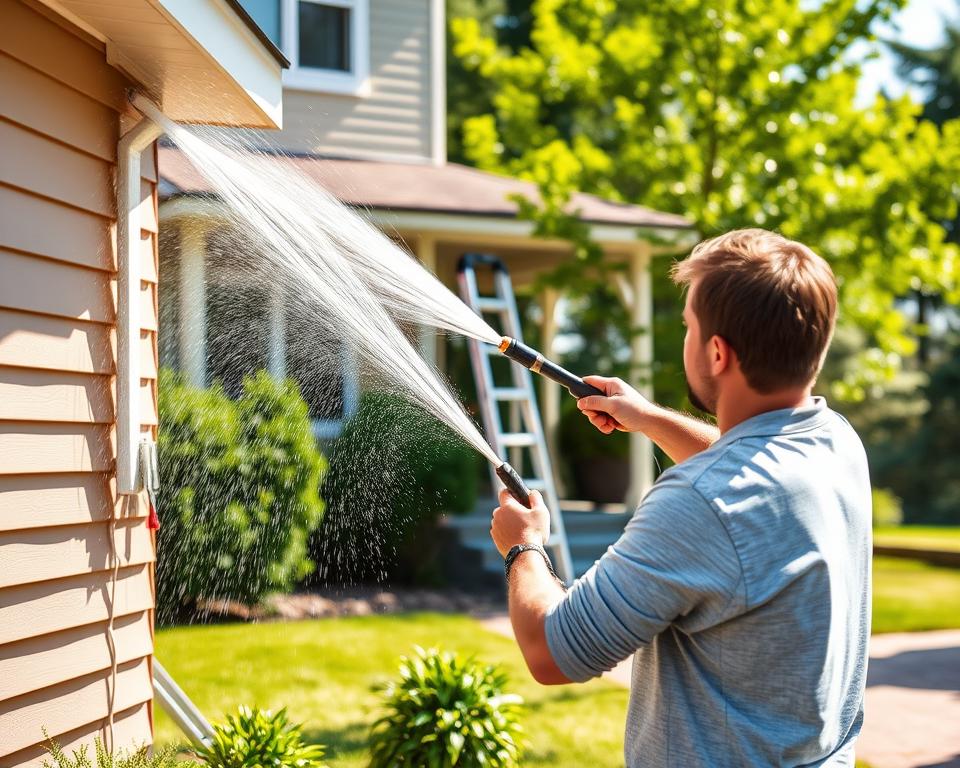
Dealing with Mold and Mildew
Mold and mildew are big problems for siding, more so in damp or shaded spots. Mix one part bleach with three parts water for the solution. Apply it with a soft-bristled brush, let it sit, then rinse well. Always wear gloves and eyewear when using bleach.
Prevention is key: Regular cleaning and good airflow can stop mold and mildew on your siding.
Pressure Washing: Do’s and Don’ts
Pressure washing can clean your siding well if done right. Do use a wide fan tip for even pressure, and don’t use a narrow nozzle that can damage the siding. Keep the nozzle 12 inches away and use low pressure to avoid damage.
- Test the pressure washer on a small, inconspicuous area first.
- Avoid using pressure washing on siding with known damage or loose panels.
How to Maintain Insulated Siding Throughout the Year
To keep your insulated siding in top shape, follow a year-round maintenance plan. This ensures your siding insulates well and looks great all year. It’s important to keep up with it as the seasons change.
Seasonal Inspection Checklist
Regular checks are vital for your insulated siding. Make a checklist to look for damage, check the siding’s condition, and ensure everything is securely attached.
A good checklist should include:
- Inspecting for cracks, holes, or gaps in the siding
- Checking for signs of wear around windows and doors
- Verifying that all siding panels are securely attached
- Looking for signs of mold or mildew
Spring Maintenance Tasks
Spring is the best time to clean your insulated siding after winter. Start by washing it with a mild detergent to remove dirt and debris.
Some key spring tasks include:
| Task | Description |
|---|---|
| Cleaning | Wash the siding with a mild detergent |
| Inspection | Inspect for damage caused during winter |
| Repair | Make necessary repairs to damaged areas |
Summer Care Tips
In summer, check your siding for damage from the heat. Look for loose or damaged panels and fix them if needed.
Some summer tips include:
- Checking for loose or damaged panels
- Inspecting for signs of insect infestation
- Ensuring that the siding is not obstructed by vegetation
Fall and Winter Preparation
As fall and winter come, get your siding ready for the cold. Check for damage or gaps that could let moisture in during winter.
Some key tasks for fall and winter include:
- Sealing any gaps or cracks
- Inspecting for signs of wear around windows and doors
- Ensuring that the siding is clean and free of debris
Identifying and Repairing Common Siding Damage
Knowing how to spot and fix common insulated siding problems can save you a lot of money. Keeping up with maintenance makes your home look better and keeps it working right. This includes keeping energy costs down and protecting against the weather.
Cracks and Holes: Assessment and Fixes
Cracks and holes in insulated siding can cause big problems if not fixed fast. They let water in, which can harm the insulation and the wall’s strength. Assessing the damage means looking at the size and where the cracks or holes are. For small ones, a sealant might work. But bigger holes might need a patch that matches the siding.
Loose or Damaged Panels
Loose or damaged panels are another common problem. Checking the panels regularly for looseness or damage is key. If a panel is just loose, you can fix it with the right fasteners. But if it’s damaged, you might need to replace it. Making sure the new panel fits right and is secure is important.
Water Damage Signs and Solutions
Water damage shows up in different ways, like discoloration, warping, or rotting. Identifying the source of the water damage is the first step. After fixing the source, you might need to repair or replace the siding. Sometimes, the damage is just to the siding, but often it affects the wall too, needing bigger repairs.
Insulation Compression Issues
Insulation compression happens when the siding is not installed right or is damaged. This makes the insulation less effective. Checking for insulation compression means looking for signs of bad installation or damage. If you find compression, you might need to take off the siding, fluff or replace the insulation, and then put the siding back on right.
Fixing these common problems with insulated siding can stop small issues from becoming big ones. This saves time and money. Regular checks and quick fixes are important to keep your siding working well for a long time.
Material-Specific Maintenance Guidelines
Knowing what your insulated siding is made of is key to keeping it in top shape. Each material has its own needs for upkeep. This ensures it lasts long and works well.
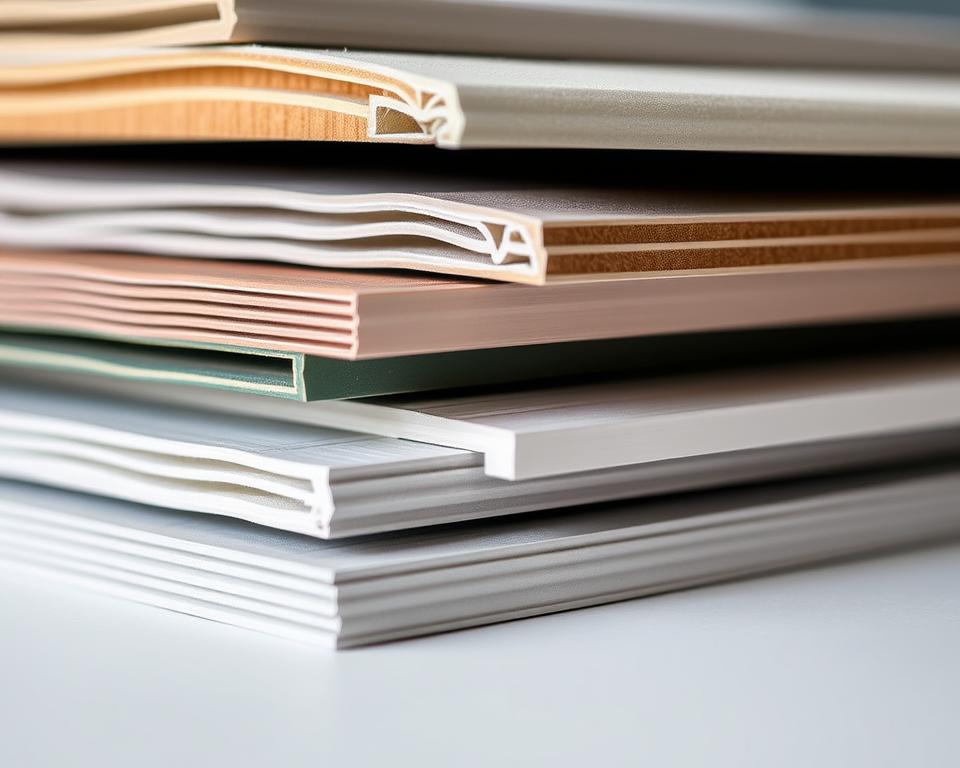
Vinyl Insulated Siding Care
Vinyl insulated siding is tough and easy to care for. To keep it looking good, clean it often. Use a soft cloth or brush to wipe away dirt and grime. For stubborn stains, mix soap and water. But steer clear of harsh chemicals or rough cleaners that can harm the vinyl.
Key care tips for vinyl insulated siding:
- Regularly check for damage or color changes
- Clean with mild soap and water
- Avoid high-pressure washes
Fiber Cement Insulated Siding Maintenance
Fiber cement siding stands up to pests and fire but needs care to avoid damage. Look for cracks or damage often. Fixing cracks with sealant stops water leaks. Painting or coating keeps it looking good and protects it from the weather.
Important maintenance tasks for fiber cement insulated siding:
- Seal cracks and gaps
- Repaint or re-coat as needed
- Check for damage after bad weather
Wood and Composite Insulated Siding Upkeep
Wood and composite siding give a natural look and need regular checks and cleaning. For wood, use sealants or stains to guard against moisture and UV rays. Composite siding might need less work but should be cleaned often to avoid dirt buildup.
Upkeep tips for wood and composite insulated siding:
- Regularly clean with a mild detergent
- Apply sealants or stains to wood siding
- Inspect for signs of wear or damage
Metal Insulated Siding Considerations
Metal insulated siding is strong and pest-resistant but can rust or corrode if not looked after. It’s important to check for damage or rust often. Using a rust-inhibiting coating can make it last longer.
Key considerations for metal insulated siding:
- Inspect for rust or corrosion
- Apply rust-inhibiting coatings
- Clean with mild soap and water
Protecting Insulated Siding from Environmental Factors
Keeping insulated siding in good shape is key to its energy efficiency and looks. Many environmental factors can harm it. Knowing these factors helps homeowners take care of their siding.
UV Protection Strategies
UV rays can damage insulated siding, causing fading and cracking. Homeowners can use UV-resistant coatings or paints. They can also pick siding materials that protect against UV rays.
Key UV Protection Measures:
- Apply UV-resistant coatings or paints
- Choose siding materials with built-in UV protection
- Regularly inspect siding for signs of UV damage
Managing Moisture and Humidity
Moisture and humidity can lead to mold and water damage. To manage this, ensure good drainage and use moisture-resistant siding. Also, keep the area well-ventilated.
| Moisture Management Strategies | Description | Benefits |
|---|---|---|
| Proper Drainage | Ensure that water can drain freely from the siding | Reduces risk of water damage |
| Moisture-Resistant Materials | Use siding materials that are resistant to moisture | Minimizes risk of mold and mildew |
| Good Ventilation | Maintain adequate ventilation around the home | Reduces humidity levels |
Preventing Pest Infestations
Pests like insects and rodents can harm insulated siding. To prevent this, seal gaps and cracks. Use siding materials that pests don’t like. Keep the area clean and debris-free.
Landscaping Considerations for Siding Protection
Landscaping can affect insulated siding. Plant trees and shrubs far from the home. Make sure the ground slopes away from the foundation. Use mulch or ground covers to protect the siding.
Landscaping Tips:
- Plant trees and shrubs at least 3 feet away from the home
- Ensure the ground is graded to direct water away from the foundation
- Use mulch or ground covers to reduce moisture accumulation
Extending the Lifespan of Your Insulated Siding
To make your insulated siding last longer, you need to know how to take care of it. By being proactive, you can keep your siding looking great for many years.
Preventative Maintenance Schedule
Having a maintenance plan is key. It helps spot problems early. You should check your siding for damage, clean it regularly, and watch for wear around windows and doors. This way, you avoid expensive fixes later.
Professional Inspections and Treatments
While you can do a lot yourself, a pro can spot things you might miss. They can find damage or needed repairs that you can’t see. They might also apply special treatments to make your siding last longer and look better.
Cost-Effective Maintenance Strategies
Keeping your siding in good shape doesn’t have to cost a lot. Use mild cleaners, fix things as soon as you can, and reuse materials for repairs. Remember, fixing small problems early saves a lot of money later.
By following a maintenance plan, getting professional checks, and using smart fixes, you can make your insulated siding last longer. This means it will keep your home energy-efficient and looking good for years.
Conclusion
Proper care and maintenance are key to making your insulated siding last longer. By following the tips in this article, your siding will stay in great shape. It will keep your home energy-efficient and protected.
Insulated siding is a smart choice for homeowners. Regular cleaning, checks, and fixes can stop damage and save you money. By adding these insulated siding maintenance summary steps to your routine, your home’s exterior will stay beautiful for years.
Remember a few important siding care tips. Always wash your siding, check for damage, and fix problems fast. A proactive maintenance approach helps avoid big issues. This ensures your insulated siding works well for a long time.
